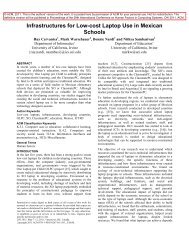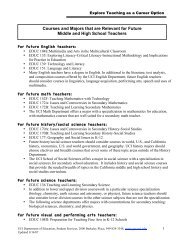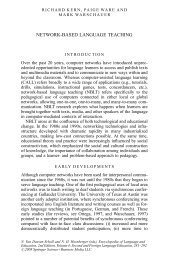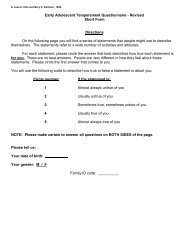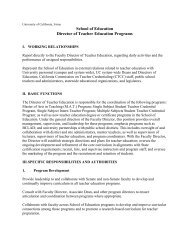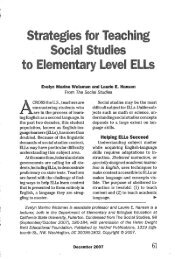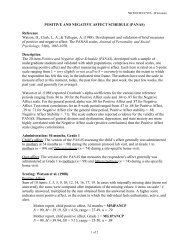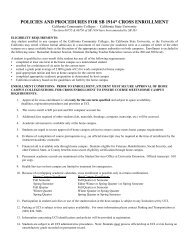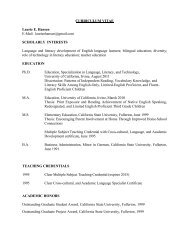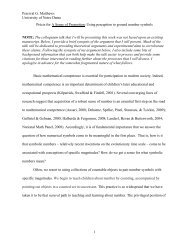Transforming digital reading with visual- syntactic text formatting ...
Transforming digital reading with visual- syntactic text formatting ...
Transforming digital reading with visual- syntactic text formatting ...
You also want an ePaper? Increase the reach of your titles
YUMPU automatically turns print PDFs into web optimized ePapers that Google loves.
The jalt call Journal 2011: Regular Papers ( Conference Issue )For example, in 2003–2004, a study was carried out in six Grade 10 World History Classes,<strong>with</strong> three teachers each teaching two of the classes. First, the 84 students in the classeswere randomly assigned to one of the six classes. Then, the three teachers were randomlyassigned to teach one experimental course and one control course. A pretest showed thatthe students in the experimental and control groups were equivalent in academic ability,and the two groups also had similar proportions of gender and native language subgroups.The history <strong>text</strong>book used in the course was prepared for <strong>digital</strong> display and converted toVSTF. In each of the six classes, students read the <strong>text</strong>book material on computer in twicea week 25-minute sessions at a computer lab. The experimental group read the material inVSTF, whereas the control group read the material in block format. Both VSTF and block<strong>text</strong> electronic <strong>text</strong>book platforms permitted font enlargement, choice of dark or lightbackground colors, and a point-&-click table of contents. Block <strong>formatting</strong> for the controlgroups’ electronic <strong>text</strong>books used the same number of characters per line as was found inthe standard, paper-based <strong>text</strong>book, <strong>with</strong> left margin-only justification.Other than the <strong>text</strong>book <strong>reading</strong> condition, all other instruction for the two groups wasequivalent. Students had the same assignments and took the same unit exams (ten) andfinal exam (one) throughout the academic year. All of the exams were generated automaticallyby test-generator software and a question bank that the publisher provided <strong>with</strong> the<strong>text</strong>book. The unit exam covered material taught over the previous few weeks whereas thefinal exam covered material taught over the academic year.Exam scores of students in the experimental (VSTF) and control (block format) groupswere analyzed <strong>with</strong> a test of repeated measures multivariate analysis of variance, <strong>with</strong>pretest <strong>reading</strong> comprehension as an independent variable. Results showed that studentsin the VSTF classes scored significantly higher on both the unit exams and the final exam.Figure 7 shows the differences between the VSTF group and the block format groupon the ten unit exams. Students <strong>reading</strong> the <strong>text</strong>book <strong>with</strong> VSTF scored higher on each ofthe ten tests. In addition, there appears to have been a training effect, as the average gapbetween the scores of the VSTF group and the block format group was much higher in threeof the last four weeks than in had been in any of the first six weeks. Overall, the effect sizeof the difference in exams in the second half of the year (.55) was larger than the effect sizeof the differences in the first half (.375).262Figure 7. Unit exams in 10th grade History



